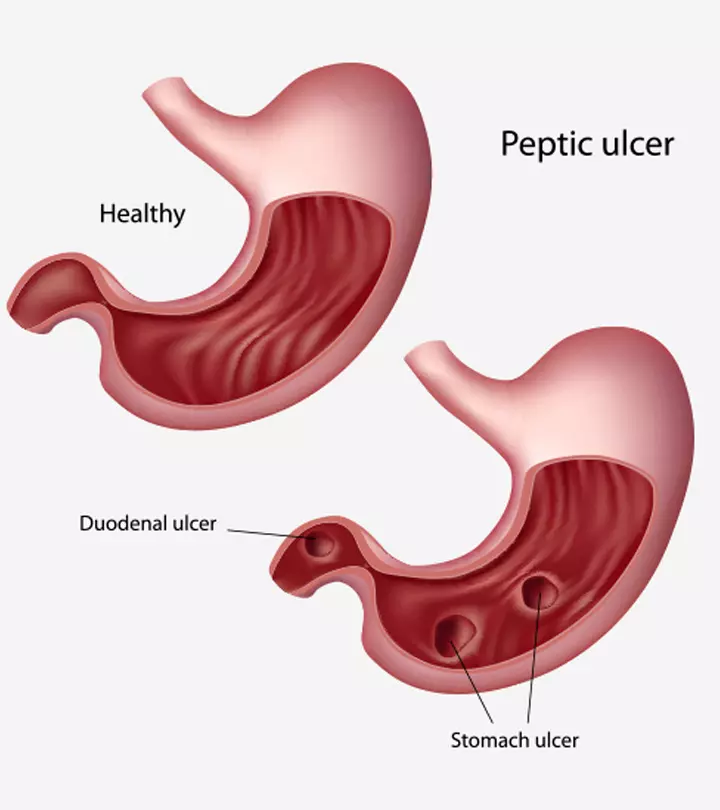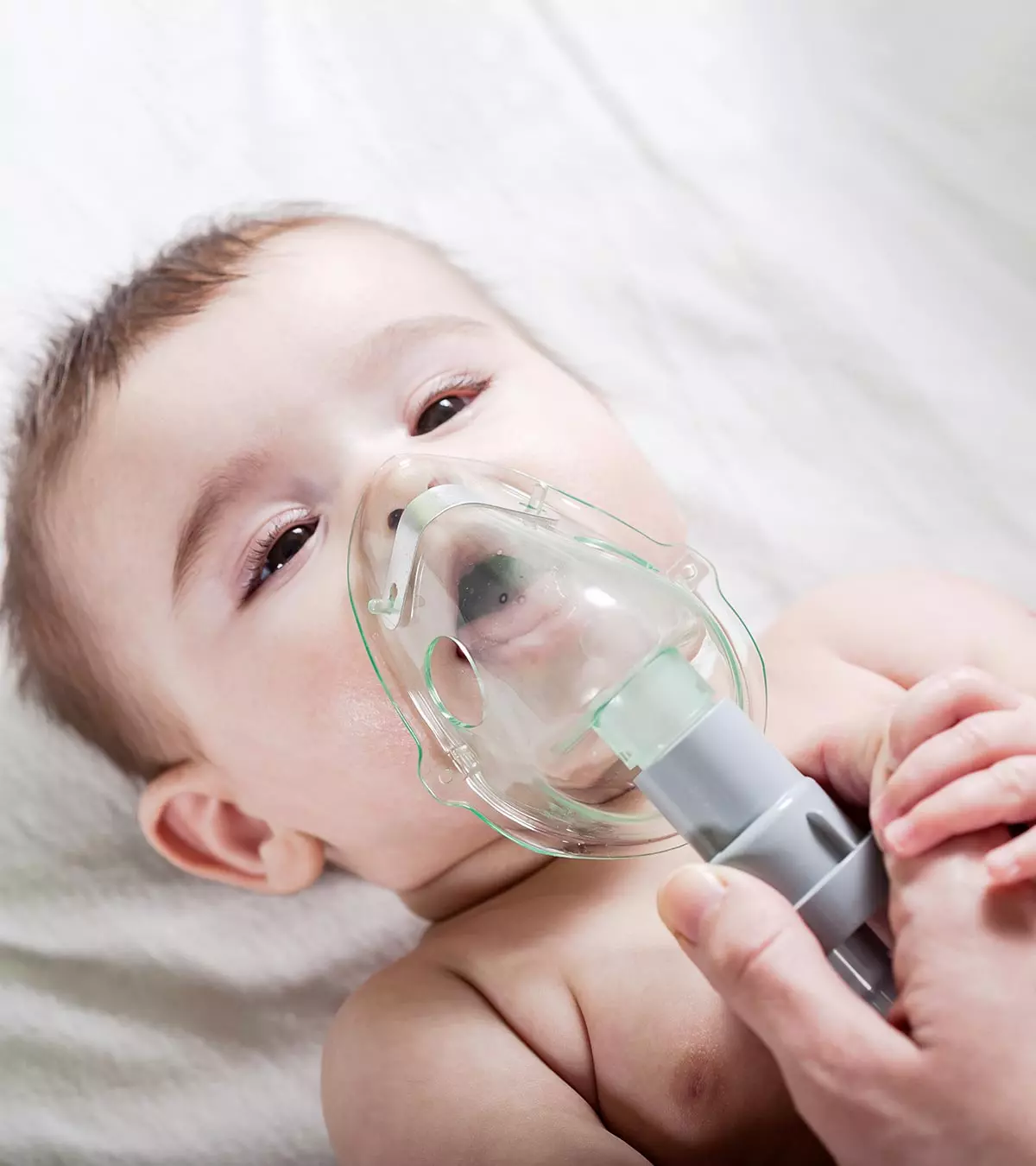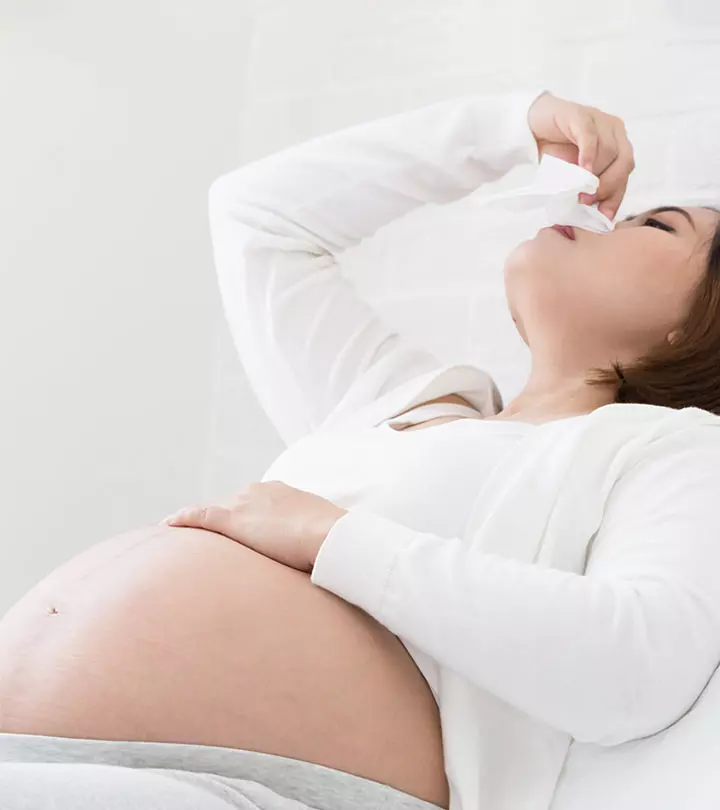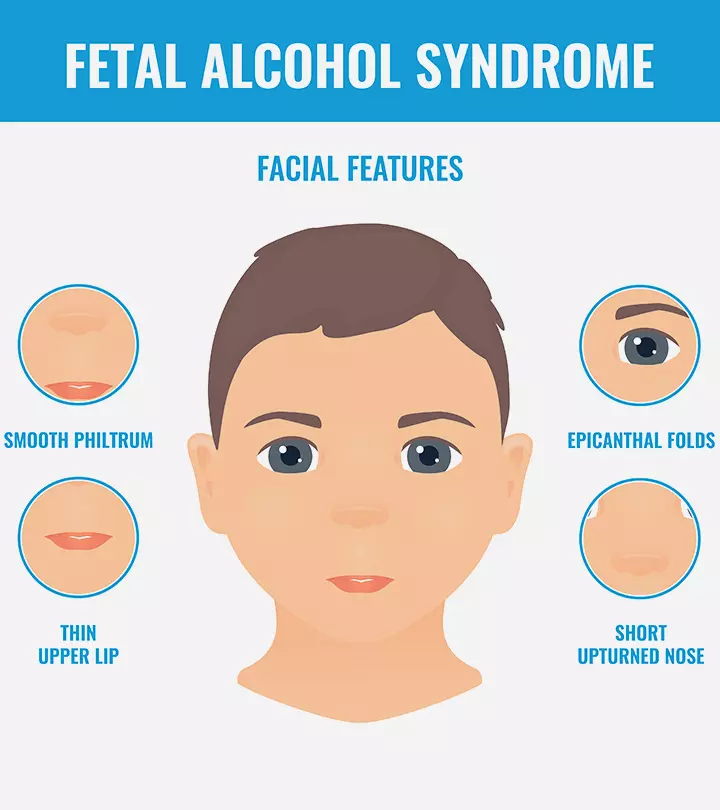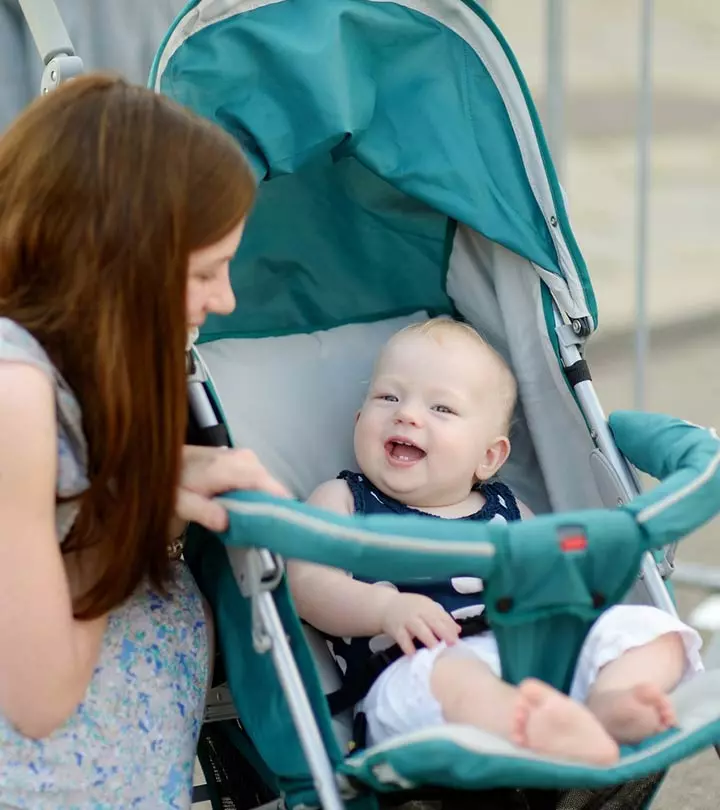
Image: Shutterstock
Taking your baby out for the first time is a special experience. But you need to ensure that your baby is safe and sound and away from possible hotspots of germs or infections. This is where strollers come into action. A baby stroller is an essential travel system for most would-be or new parents and a must-have item on their baby registry. But the looming question is, when can the baby sit in a stroller? This post will help you answer that question. Understanding when a baby can safely sit in a stroller is crucial for parents, as improper use can lead to safety issues. This guide provides insights on developmental milestones, safety considerations, and tips for choosing the right stroller for your baby. Read on to learn when a baby can sit in a stroller, how to use it, and the safety tips to consider before buying one.

Key Pointers
- Babies can move around on strollers by the age of four months if they develop reasonable head control or can sit upright for a longer time.
- To ensure the safety and comfort of your infant, you should purchase a stroller with sufficient support, reclining choices, and sterling control.
- Baby safety in strollers can be ensured by never leaving a baby unattended, avoiding excessive storage space, hanging bags or covers, and frequently inspecting stroller wheel breaks.
When Can A Baby Sit In A Stroller?
Often, babies can start moving around in a stroller at around four months or when they have sufficient head control and neck strength or can manage sitting up for extended periods. However, the period varies among babies.
If you intend to take your newborn in a stroller before they can lift their head, ensure that the stroller seat can recline completely to support their head and neck muscles. The American Academy of Pediatrics (AAP) recommends against putting your baby to sleep in a stroller if they are younger than four months to reduce the risk of suffocation (1). However, if they fall asleep in the stroller, move them onto a flat, firm, non-inclined surface for safety (2).
Consult your pediatrician if you have any questions or concerns regarding using a stroller for your baby.
 Quick tip
Quick tipWhen Can You Transition The Baby To A Regular Stroller Seat?
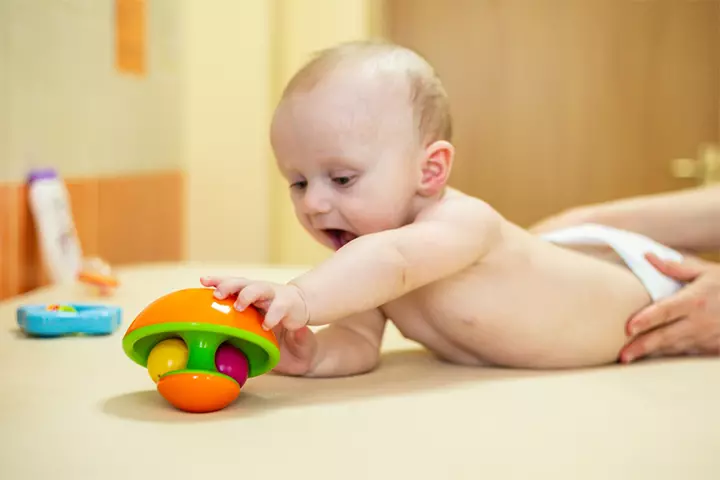
Once your baby can lift their head without help and keep it upright for a certain period, you can turn the reclined seat of the stroller to a seating position. You could also incorporate gross motor activities for infants, such as tummy time or guided reaching exercises, to help your baby reach their milestones. Consult your pediatrician for guidance on safe, age-appropriate activities for your baby and tips on stroller safety.
Cheryl McCarthy, a mother and blogger, shares her perspectives on stroller walks and tips for making regular stroller walks more enjoyable for babies, “I walk every day in the local park near my house, and I see a lot of moms out with young children in strollers and pushchairs. It’s good exercise for moms and gives children lots of fresh air and a nice change of scenery.” She adds, “I would never argue with giving children new and exciting things to look at each day. That’s great visual stimulation in and of itself. To make the most of your daily walk for your child, I recommend putting yourself into the role of your baby’s tour guide. Each day, talk about whatever you see: the warm sunshine, the tall trees, the beautiful flowers, and the white fences that line the pathways. This may seem ordinary to you, and even feel a little silly, but to your child, it is a wonderland of fascinating, fabled proportions (i)!”
What Should You Consider When Buying A Stroller?
Some strollers can recline completely and come with attachments such as an infant-only car seat or a bassinetiChildren’s wicker cradle. . A few other things to check when buying a stroller are as follows (3) (4):
- A solid frame and an easy steering mechanism
- It has a five-point harness, multiple recline positions, and a wide base. Experts state that non-reclining strollers are not recommended for babies under six months (2).
- Check the harness system safety by strapping up your toddler in the stroller and maneuvering the stroller very slightly.
- Check the buckles and straps for any deterrents of comfort.
- Carry and lift the stroller when opened and folded to ensure it is sturdy but portable.
- Check the brakes and the locking system of each wheel and whether the handles are comfortable for you to operate.
- A large enough storage basket and trunk space
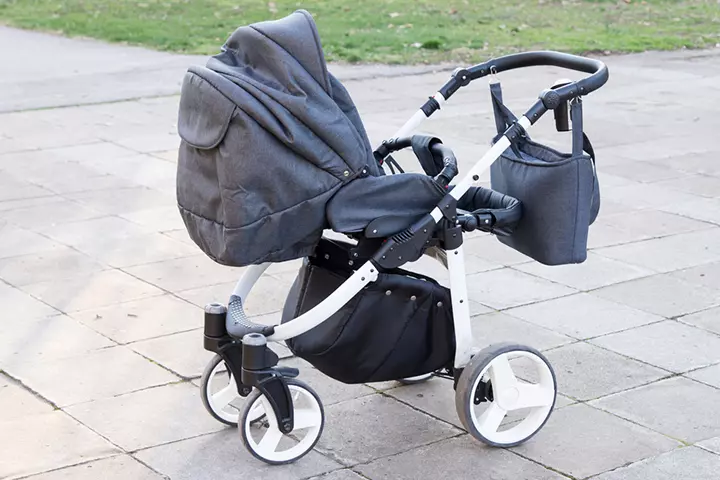
- Attachments such as an infant car seat or a reversible seat to attach with the stroller when required.
- The maneuverabilityiQuality of being easy to move and direct. of the stroller, both with and without extra weight
- Ensure that it complies with the US government’s safety standards.
- The warranty and return policy of the product
 Quick tip
Quick tipCheck the product description, manufacturer’s instructions, and product details to ensure the stroller suits your baby’s height, weight, and age. It is advisable to purchase only such baby gear that is built following the recommended pediatric guidelines for stroller use and safety. Experts also suggest checking for stroller recalls by visiting the US Consumer Product Safety Commission (CPSC) website or the manufacturer’s site before use to ensure your stroller is safe and up-to-date (5).
What Are The Safety Measures To Take While Using A Stroller?
According to a report by the US Consumer Product Safety Commission, an estimated 7,200 children younger than age five were treated in emergency departments in 2019 due to stroller-related injuries (6). So, it’s crucial to select a stroller that meets safety standards to minimize the risk of accidents and injuries. Various types of strollers are available in the market, including jogging strollers, umbrella strollers, and double strollers. However, no matter which stroller you choose, you must take certain safety precautions. Some of these precautions are as follows (2) (7) :
- Do not leave your baby alone and unsupervised in a stroller.
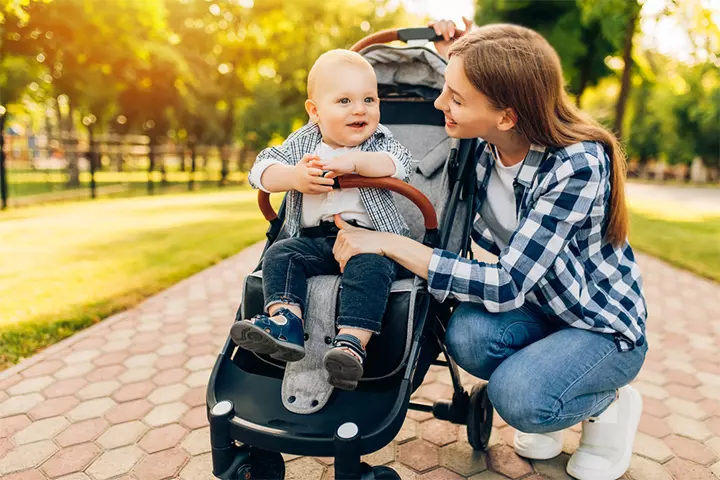
- Do not overload the storage space of the stroller.
- Always ensure you strap in the five-point safety harness.
- Ensure that the folding mechanisms are locked securely and the stroller is sturdy when moved.
- Do not hang baskets or bags on the stroller’s handles, as it may cause it to tip over.
- Do not place extra pillows or blankets in the carriage space to reduce the risk of suffocation.
- Ensure that the wheel brakes are on whenever you stop the stroller.
- Always place the tether strap around your waist.
 Quick tip
Quick tipFrequently Asked Questions
1. Are strollers bad for babies?
No, controlled use of strollers is safe for babies. The key is to balance their time in the stroller and otherwise. Spending too much time in a stroller may reduce their time for other physical activities, interaction with caregivers, etc.
2. What is the purpose of strollers?
Strollers are useful for easy transport, storage of goods, safely carrying the baby in traffic and parking lots, and smoothly handling the baby when you are on the move to run errands or on walks or jogs (8).
3. Should newborns lie flat in strollers?
Yes, newborns should ideally lie flat. This is because sitting at an angle can impact the infant’s breathing, particularly for infants and preemies. When an infant’s head falls forward, it can restrict the airway, leading to breathing issues (10).
4. What can I use instead of a stroller for my baby?
There are several options for baby transportation that you can use instead of a stroller. These include baby wraps, carrier slings, backpack carriers, and hybrid baby carriers, among others.
5. How much weight does a stroller hold?
Standard strollers are typically designed to hold a child weighing up to 50 pounds, which is generally considered safe for children up to about four years old, depending on their size and weight (4). However, there are also strollers designed for older children or multiple children, and these may be able to hold more weight.
6. How long can a baby be in a stroller?
Canada-based pediatric and prenatal chiropractor, Dr. Carolyne Hiebert, says, “Ideally, children or infants should not be in a stroller for prolonged periods. Canadian safety guidelines recommend that babies should not be in a stroller for longer than one hour. Also, it is essential for infants and children in a stroller to always be monitored by an adult.”
7. What are the risks of using a stroller too early?
Using strollers before the baby has head and neck control may increase the risk of poor posture and misalignment in the spine or other parts of the body. The baby may also be prone to slipping out of the stroller’s harness or sliding deep into the seat, increasing the risk of injuries and suffocation. Lack of sufficient neck control can cause the neck to bend into an uncomfortable position, harming the baby.
8. Is it safe to take the baby on a stroller in the sun?
The National Health Services recommends limiting sun exposure for infants under six months (11). Even for babies older than six months, avoid taking them out in the sun for extended periods during peak hours. If stepping out for a short time, dress your baby in lightweight clothes, keep them hydrated, and use a stroller with a sunshade or cover it with a light cloth to prevent overheating (12)
A stroller can come in handy if you wish to take your baby out for a stroll. However, choosing a stroller that meets all government-implied stroller recommendations and safety guidelines is important. So, before buying a stroller, you must check all features and user reviews on different e-commerce platforms to make sure you are investing in a good stroller. Also, ensure using a stroller appropriate for your child’s age to avoid any mishaps. Moreover, maintain your stroller regularly and discontinue using it if any major part is malfunctioning or damaged.
Infographic: Advantages And Disadvantages Of Baby Strollers
Strollers may be a comforting travel companion for the infant and the new parent. Although there are several benefits, there are a few drawbacks to using strollers, as detailed in the infographic below.
Some thing wrong with infographic shortcode. please verify shortcode syntax
Illustration: When Can Baby Sit In A Stroller? Safety Measures And Tips
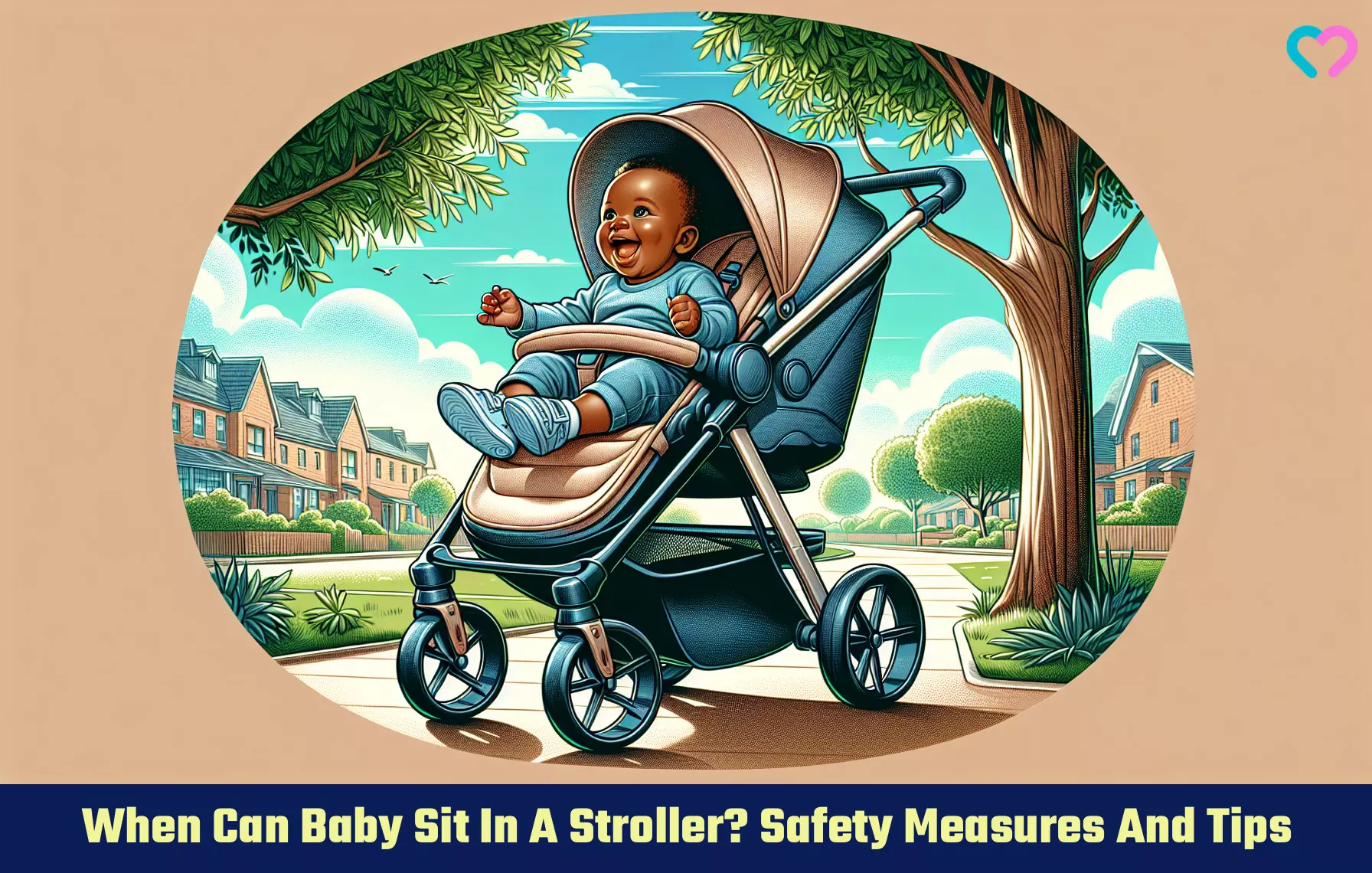
Image: Dall·E/MomJunction Design Team
Watch this video for some helpful tips on how to get your toddler to sit in a stroller. Learn how to make it a fun and enjoyable experience for both you and your child.
Personal Experience: Source
MomJunction articles include first-hand experiences to provide you with better insights through real-life narratives. Here are the sources of personal accounts referenced in this article.
i. Stroller Time! Making the Most of Your Walk;https://movingsmartblog.blogspot.com/2012/01/stroller-time-making-most-of-your-walk.html
References
- Safety tips help protect children from stroller injuries.
https://publications.aap.org/aapnews/news/13463?autologincheck=redirected - Prams and strollers: safety guide.
https://raisingchildren.net.au/babies/safety/equipment-furniture/pram-stroller-safety - How to Buy a Safe Stroller.
https://www.healthychildren.org/English/safety-prevention/on-the-go/Pages/How-to-Buy-a-Safe-Stroller.aspx - Stroller Buying Guide.
https://www.consumerreports.org/babies-kids/strollers/buying-guide/ - Strollers.
https://www.cpsc.gov/recall-products/strollers - Injuries and Deaths Associated with Nursery Products Among Children Younger than Age Five.
https://www.cpsc.gov/s3fs-public/Nursery-Products-Annual-Report-2025.pdf - Carriages and Strollers Business Guidance & Small Entity Complilance Guide; USPC; United States Consumer Product Safety Commission
https://www.cpsc.gov/Business–Manufacturing/Business-Education/Business-Guidance/Carriages-and-Strollers - Catherine S. Birken et al.; (2015); Parents’ perception of stroller use in young children: a qualitative study
https://www.ncbi.nlm.nih.gov/pmc/articles/PMC4546049/ - Guide to prams and strollers.
https://www.pregnancybirthbaby.org.au/prams-and-strollers - Are You Using Your Rear-Facing-Only Car Seat Safely?
https://www.healthychildren.org/English/safety-prevention/on-the-go/Pages/Baby-Carriers-Always-Use-in-the-Car.aspx - Keeping your baby safe in the sun.
https://www.nhs.uk/conditions/baby/first-aid-and-safety/safety/safety-in-the-sun/ - Babies and safety.
https://www.betterhealth.vic.gov.au/health/healthyliving/babies-and-safety
Community Experiences
Join the conversation and become a part of our nurturing community! Share your stories, experiences, and insights to connect with fellow parents.
Read full bio of Dr. Jessica Madden
- Dr. Carolyne Hiebert is a prenatal and pediatric chiropractor with over 12 years of experience. A mother of three young children, her special interests are spinal health and childhood health and wellness. Dr. Hiebert practices in the Fraser Valley of British Columbia, seeing children and prenatal and maternity clients.
 Dr. Carolyne Hiebert is a prenatal and pediatric chiropractor with over 12 years of experience. A mother of three young children, her special interests are spinal health and childhood health and wellness. Dr. Hiebert practices in the Fraser Valley of British Columbia, seeing children and prenatal and maternity clients.
Dr. Carolyne Hiebert is a prenatal and pediatric chiropractor with over 12 years of experience. A mother of three young children, her special interests are spinal health and childhood health and wellness. Dr. Hiebert practices in the Fraser Valley of British Columbia, seeing children and prenatal and maternity clients.
Read full bio of Sanjana Bhattacharjee
Read full bio of Rohit Garoo
Read full bio of Vidya Tadapatri









